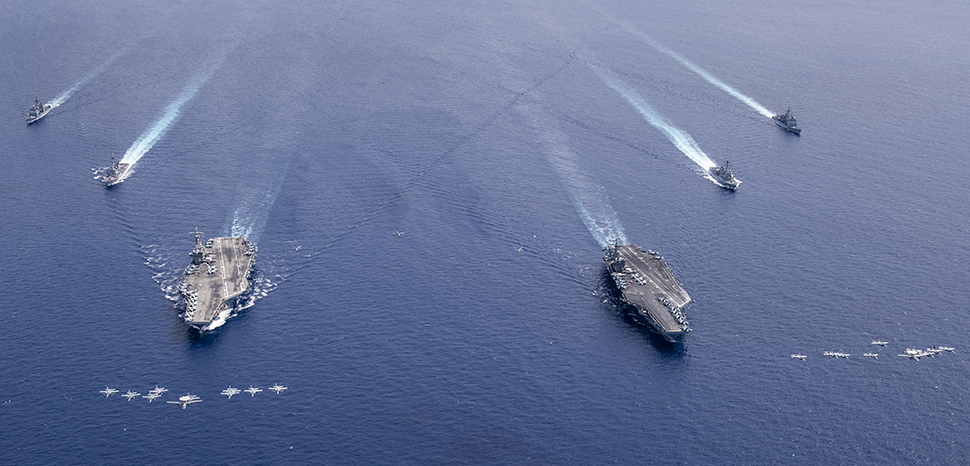Practitioners and commentators have long proclaimed Asia the new center of global geoeconomics. What happens in Asia matters to the world for two simple reasons. First, Asia is home to more than half of the world’s population, and two-thirds of the world’s economic activity occurs here. Therefore, Asia is the engine of global growth.
Asia is also not a beautiful garden with benign actors. It hosts seven of the world’s largest militaries in its geographical expanse. Thus, Asia is a contested space, home to a tapestry of nationalities and ethnicities. Unlike in Europe, nationalism is not taboo in Asia. Most Asian states have decolonized mainly in the last seven decades. They are aspirational and fiercely protective of their identities. The likely result is that Asian politics is dynamic and vibrant. Thus, apart from geoeconomics, Asia is also a critical theatre of geopolitics. China’s rise has further complicated this geopolitical dynamic.
Given this recent churn in Asian geopolitics due to China’s rise, the US is recalibrating its traditional hubs-and-spokes alliance system and augmenting the capabilities of its regional allies and trusted partners.
For long, Beijing was tight-lipped about its ambitions and sweet-talked its way through. Astute Chinese leaders implicitly sold the idea to the Americans that political liberty would be a natural consequence of economic reform. This was music to Washington’s ears. After all, the desire to mold others in your teflon is irresistible.
So after Nixon’s outreach to Mao in 1971, China quietly sided with Washington against the erstwhile Soviet Union. Former Chinese statesman Deng Xiaoping knew well that American capital and technology were the elixirs for China’s economic transformation. Riding pillion with Washington would catapult its teeming millions from poverty to the middle class.
In retrospect, the strategy bore rich fruit. Western capital and Chinese domestic reforms and manufacturing smarts transformed China into a phenomenal economic powerhouse. China’s economic sprint also emerged as an opportunity for other regional actors to develop their economies. Institutions like the ASEAN prospered under the twin benefits of the Chinese economic umbrella and American security shelter. This equilibrium of the US-China bonhomie acted as the base for regional economic prosperity.
However, like all great powers, Beijing now thinks its time has come. It wants to transform its economic muscle into political power. Therefore, Washington is recalibrating its Asia strategy by strengthening its alliance system’s spokes and devolving greater capabilities to its regional partners.
In the 1970s, Washington’s humiliating debacle in the Vietnam War compelled many to strike off the US from Asian waters. Vietnam was a severe case of passion overruling pragmatism. However, Washington has repeatedly proved naysayers wrong by reinventing itself and recalibrating its role in the world. For example, practitioners have pointed out that the Vietnam War compelled the US to shift its strategy in Asia from onshore containment to offshore balancing. Put simply, Washington discarded the idea of direct interventions to pursue a relatively more hands-off approach to securing its interests and those of its allies.
Offshore balancing also means that if any regional conflict breaks out and threatens the position of an American ally, Washington would apply its military muscle in such a scenario. The primary objective of such a strategy was to prevent any single power from dominating Asia. As long as no single power threatened American interests or its allies, the United States was happy to take a hands-off approach.
However, the dizzying rise of China and its explicit ambitions to replace the America-led Asian order has crumpled the premise of the old regional equilibrium. Therefore, Washington is recalibrating its strategic outlook in Asia–by facilitating greater cooperation between the spokes of its alliance system and empowering its regional allies and partners with greater capabilities.
Some would argue that China’s assertiveness demonstrates its uneasiness with American superiority in Asia and is directly related to its perception of itself as the reigning power in the region. However, Chinese assertiveness has also caused alarm about a conflict breaking out, more likely accidental, given the regional atmosphere is pregnant with mutual suspicion.
In this light, the US is attempting to recalibrate its traditional hub-and-spokes alliance system to complement its larger offshore balancing strategy. However, the logic remains the same: preventing a China-dominated unipolar Asia, in other words, pursuing a multipolar Asia. This sentiment also reverberates with American allies and partners throughout the region.
America’s Asia reorientation entails two key components. First, strengthening the spokes– aka its allies and partners– by facilitating greater engagement amongst them and second, augmenting the technological and military capabilities of regional allies and partners.
Such a reorientation makes the role of regional allies and partners more relevant, decentralizes burden-sharing, and offers a temporary respite from American attention being bogged down elsewhere. Therefore, the US plays a behind-the-scenes role in mending fences between Japan and South Korea, fostering greater cooperation between Australia and Japan, and encouraging India to work more with Japan and Australia on a bilateral and minilateral level. The Quad arrangement between US-Japan-India-Australia is another initiative to create flexible regional arrangements in Asia, stabilizing the regional order during a period of profound geopolitical flux.
The other side of such initiatives is the greater willingness of America’s allies and regional partners to shoulder responsibilities for their own security and regional stability. For example, the AUKUS arrangement– Washington and London supplying nuclear-powered submarines to Canberra– points towards greater devolution of capabilities. AUKUS also shows greater appetite in the region to take more responsibility for regional security. Therefore, we should not be surprised to see more such developments in the medium term. For starters, the growing defense cooperation between New Delhi and Washington further points towards an altered Asian landscape.
The views expressed in this article belong to the authors alone and do not necessarily reflect those of Geopoliticalmonitor.com.




